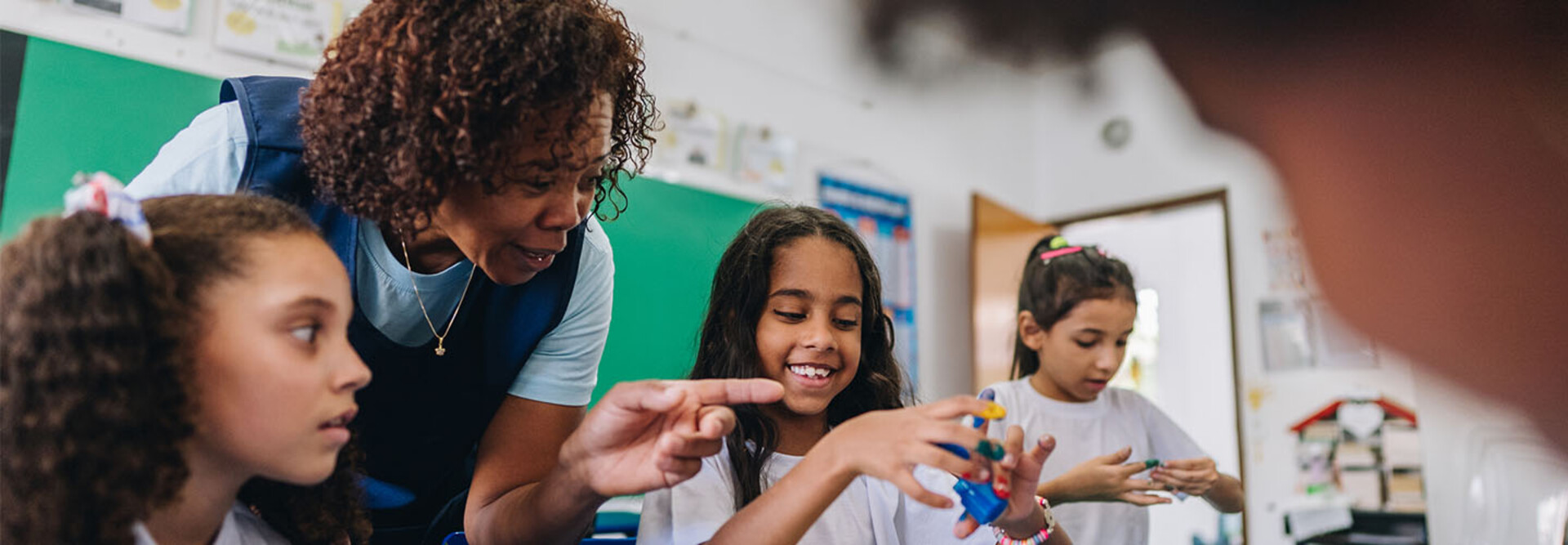AI in education has the potential to provide endlessly patient tutors; next-generation certifications and assessments; modeling, predicting and advising capabilities across all business functions in schools; and cybercrime protection at the speed of compute, said Mark Sparvell, a former teacher and Microsoft’s director of marketing for education.
“Every kid deserves to have an opportunity to be their best, do their best and contribute their best, and we know that AI can help accelerate learning by providing these endlessly patient tutors,” Sparvell said. New York City Public Schools worked with Microsoft to create a teaching assistant that relies on generative AI to share real-time feedback and answer student questions. The tool, built on Azure OpenAI Service, helps students better prepare for the “new collar” economy and could help cash-strapped districts stretch their dollars further.
“We know that schools need to be more judicious with their money and their budgets: They need to be able to work more efficiently,” Sparvell continued. All of this is possible thanks to the power of AI, he added.
DIVE DEEPER: How Microsoft Copilot can transform K–12 workflows.
Lightening the Load for Teachers and IT Support
While teachers can benefit from AI’s capabilities, at the end of the day they also require guidance and support on how to implement and incorporate the new technology in appropriate ways that truly advance learning. Professional development must keep up, said Brian Beedenbender, vice president of sales at Teq.
“The biggest challenge we see with teachers is not only how to use something but also, ‘What should I do with it?’” Beedenbender said, comparing unused educational technology with valuable items packed away in closets.
He pointed to Teq’s learning platform, Otis, as a possible solution. Otis supports teachers through ongoing, synchronous, asynchronous or one-to-one learning that helps them master technology quickly and integrate project-based curricula, he said.
He cited CoSN’s most recent State of EdTech Leadership survey, in which 50% of educational technology leaders said the most understaffed role in their schools was people to support technology integration in the classroom; 56% said instructional support was the least-funded role.
“For these initiatives, and all these great things that schools have done, especially in the past several years when there was an abundance of money, the only thing that stops those things from being truly amazing is teacher buy-in,” Beedenbender says.
Regardless of the form it takes, technology should serve to make class time quality time. Schools should work closely with teachers to ensure that the deployed technology will keep students engaged with class work and meet teachers’ curriculum or classroom needs.
Since COVID-19, student engagement has suffered through a range of challenges, noted Madison Johnston, channel marketing manager with SMART Technologies. Diverse learning styles and needs, cellphone distractions, reduced attention span and limited motivation all take a toll on engagement.
“We want to ensure our technology will get students excited about learning,” she said.
SMART’s interactive flat panels and Lumio support software enable active and student-centered learning, Johnston said, adding that teachers can create activities that adapt to differences in learning style and pace.
“We’re not just creating a front-of-room display, where the teacher is standing there presenting out to students,” she said. “We’re actually bringing students into that lesson with us, whether on the interactive display or on their personal device.”
Yet, keeping student devices up and running represents another challenge preventing teachers and other school staff from focusing on the work that matters most, says James Symons, CEO of LocknCharge.
“Librarians literally tell us, ‘We are no longer librarians. We are device managers,’” Symons shared. “So how do we get them back to doing what they do? And the teachers teaching, and IT doing the projects that they want to do?”
He explained that LocknCharge’s self-service technology enables rapid, in-classroom authentication so that a student who may have forgotten a device at home or come to school with a device that wasn’t charged can quickly swap out a new tool. This way, more students remain engaged and learning, without requiring teacher intervention.
RELATED: Why more schools are outsourcing device management.
Keeping Schools Safe with Integrated Communication
During isolated or mass school safety incidents, fragmented systems and communication tools can be a hindrance to emergency communication and reunification goals.
Schools must ensure proper procedures are in place that aim to prevent violence, assess threats, and ensure schools and districts can respond appropriately as incidents occur, said Nicholas Welch, marketing lead at Kokomo24/7.
“It’s so important for schools to take a holistic approach and to consider software solutions and integrated technology solutions that work together,” Welch says.
Technologies like Kokomo24/7 could help. Welch said the platform is simple to access, and it connects easily to other essential tools when the need arises.
“We ask our teachers to do a lot with a little,” he says. “That’s another critical piece of why a holistic approach [to school safety] that increases efficiency, decreases costs, and streamlines the process in the classroom and in building operations is so essential.”
Click here to access the full recording of this educational technology webinar.











